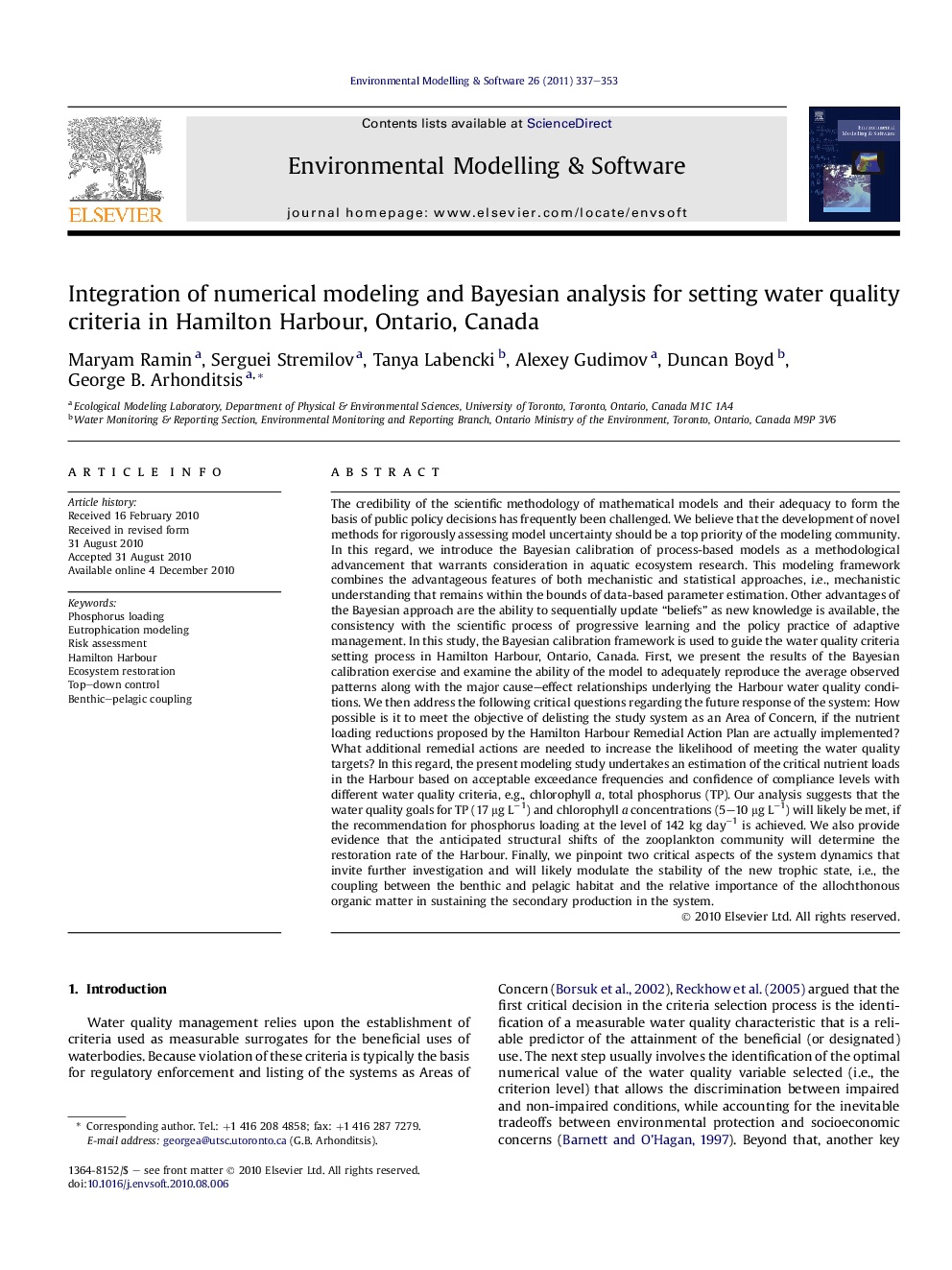| کد مقاله | کد نشریه | سال انتشار | مقاله انگلیسی | نسخه تمام متن |
|---|---|---|---|---|
| 10370806 | 876520 | 2011 | 17 صفحه PDF | دانلود رایگان |
عنوان انگلیسی مقاله ISI
Integration of numerical modeling and Bayesian analysis for setting water quality criteria in Hamilton Harbour, Ontario, Canada
دانلود مقاله + سفارش ترجمه
دانلود مقاله ISI انگلیسی
رایگان برای ایرانیان
کلمات کلیدی
موضوعات مرتبط
مهندسی و علوم پایه
مهندسی کامپیوتر
نرم افزار
پیش نمایش صفحه اول مقاله

چکیده انگلیسی
The credibility of the scientific methodology of mathematical models and their adequacy to form the basis of public policy decisions has frequently been challenged. We believe that the development of novel methods for rigorously assessing model uncertainty should be a top priority of the modeling community. In this regard, we introduce the Bayesian calibration of process-based models as a methodological advancement that warrants consideration in aquatic ecosystem research. This modeling framework combines the advantageous features of both mechanistic and statistical approaches, i.e., mechanistic understanding that remains within the bounds of data-based parameter estimation. Other advantages of the Bayesian approach are the ability to sequentially update “beliefs” as new knowledge is available, the consistency with the scientific process of progressive learning and the policy practice of adaptive management. In this study, the Bayesian calibration framework is used to guide the water quality criteria setting process in Hamilton Harbour, Ontario, Canada. First, we present the results of the Bayesian calibration exercise and examine the ability of the model to adequately reproduce the average observed patterns along with the major cause-effect relationships underlying the Harbour water quality conditions. We then address the following critical questions regarding the future response of the system: How possible is it to meet the objective of delisting the study system as an Area of Concern, if the nutrient loading reductions proposed by the Hamilton Harbour Remedial Action Plan are actually implemented? What additional remedial actions are needed to increase the likelihood of meeting the water quality targets? In this regard, the present modeling study undertakes an estimation of the critical nutrient loads in the Harbour based on acceptable exceedance frequencies and confidence of compliance levels with different water quality criteria, e.g., chlorophyll a, total phosphorus (TP). Our analysis suggests that the water quality goals for TP (17 μg Lâ1) and chlorophyll a concentrations (5-10 μg Lâ1) will likely be met, if the recommendation for phosphorus loading at the level of 142 kg dayâ1 is achieved. We also provide evidence that the anticipated structural shifts of the zooplankton community will determine the restoration rate of the Harbour. Finally, we pinpoint two critical aspects of the system dynamics that invite further investigation and will likely modulate the stability of the new trophic state, i.e., the coupling between the benthic and pelagic habitat and the relative importance of the allochthonous organic matter in sustaining the secondary production in the system.
ناشر
Database: Elsevier - ScienceDirect (ساینس دایرکت)
Journal: Environmental Modelling & Software - Volume 26, Issue 4, April 2011, Pages 337-353
Journal: Environmental Modelling & Software - Volume 26, Issue 4, April 2011, Pages 337-353
نویسندگان
Maryam Ramin, Serguei Stremilov, Tanya Labencki, Alexey Gudimov, Duncan Boyd, George B. Arhonditsis,